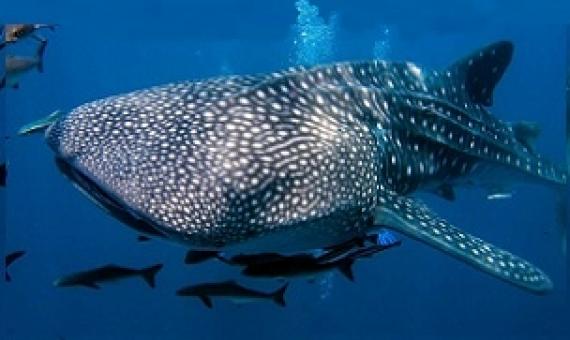Over the past 60 years, the global forest area has declined by 81.7 million hectares, a loss that contributed to the more than 60% decline in global forest area per capita.
Beyond the boundaries: How regulation-centered marine protected area information improves ocean protection assessments
Comprehensive, spatially explicit data that include regulatory information are essential for evaluating the level of protection that marine protected areas (MPAs) and other marine managed areas (MMAs) provide to marine life, and to inform progress towards ocean protection targets. An analysis based on the ProtectedSeas database, which includes information on regulated activities, found that 85% of U.S.
Mismatches in Scale between highly Mobile Marine Megafauna and Marine Protected Areas
Marine protected areas (MPAs), particularly large MPAs, are increasing in number and size around the globe in part to facilitate the conservation of marine megafauna under the assumption that large-scale MPAs better align with vagile life histories; however, this alignment is not well established. Using a global tracking dataset from 36 species across five taxa, chosen to reflect the span of home range size in highly mobile marine megafauna, we show most MPAs are too small to encompass complete home ranges of most species.
Faster Ocean Warming Threatens Richest areas of Marine Biodiversity
The vulnerability of marine biodiversity to accelerated rates of climatic change is poorly understood. By developing a new method for identifying extreme oceanic warming events during Earth's most recent deglaciation, and comparing these to 21st century projections, we show that future rates of ocean warming will disproportionately affect the most speciose marine communities, potentially threatening biodiversity in more than 70% of current-day global hotspots of marine species richness.
Marine protected areas (MPAs) are designed to conserve critical marine habitats, localized fauna, and highly migratory species such as turtles, whales, and sharks.
A Griffith-led study has developed a model to predict the success of Marine Protected Areas (MPAs) based on historical fishing pressure and environmental conditions like wave exposure and distance to coastal habitats.
"Biodiversity loss is one of our biggest environmental challenges in the world, probably more important than climate change. The problem of climate change can be corrected by stopping the emission of more carbon dioxide into the atmosphere.
A staggering 57% of threatened species need targeted recovery actions to ensure their survival, new research has shown.
The whole-site management of a Marine Protected Area (MPA) can increase the total abundance of reef species within its borders by up to 95%, according to new research.
The effects of protected areas on the ecological niches of birds and mammals
Protected areas are a cornerstone for biodiversity conservation, and typically support more natural and undisturbed habitats compared to unprotected lands. The effect of protected areas on intra-specific ecological niche has been rarely investigated. Here, we explore potential differences in ecological niche properties of birds and mammals across protected and unprotected areas, and relate such differences to species traits.












